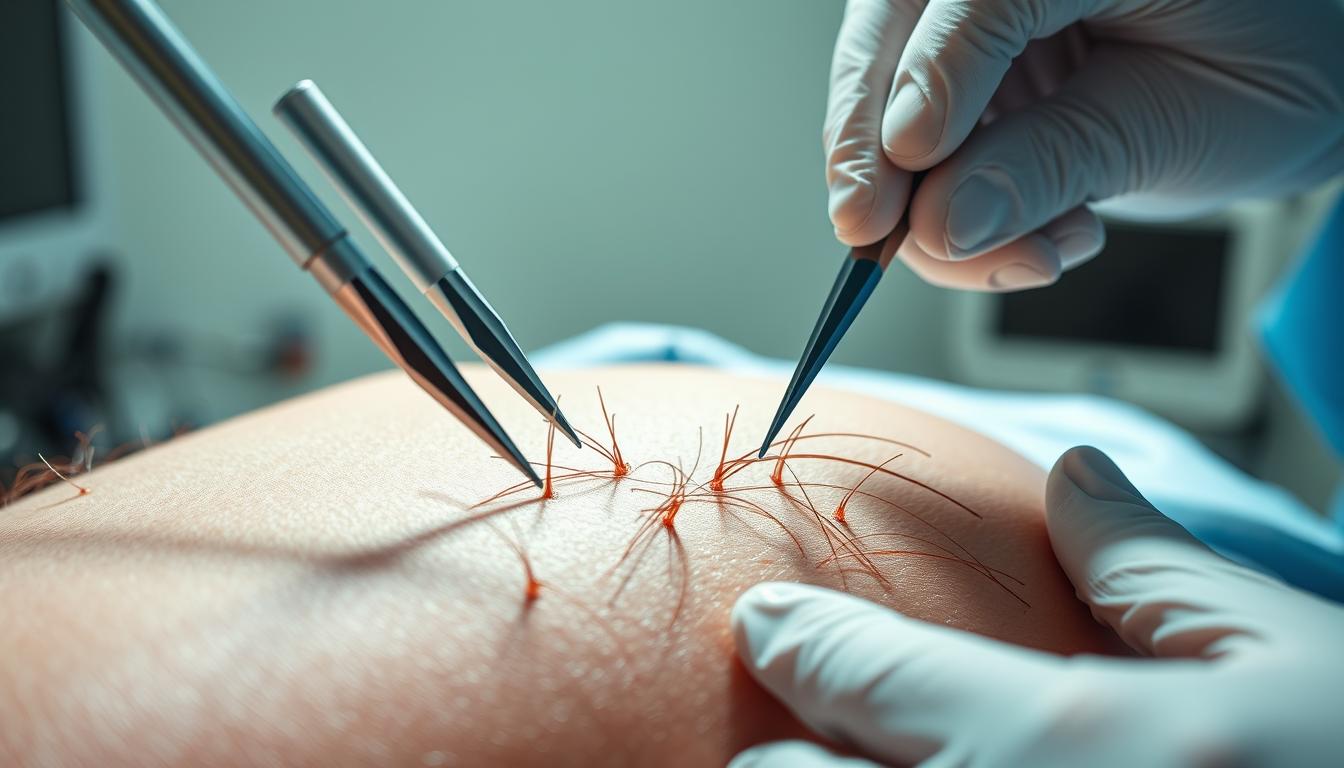For individuals struggling with hair loss, a hair transplant can be a viable solution. However, those with limited scalp donor hair may find traditional hair transplants ineffective. This is where body hair transplantation comes into play, utilizing hair from various body areas to restore scalp hair.
The procedure involves extracting hair from donor sites such as the beard, chest, and other regions, and transplanting it to the scalp. As a result, body hair transplantation has gained popularity for addressing advanced hair loss cases.
This comprehensive guide will provide an in-depth look at body hair transplantation, its benefits, limitations, and expected outcomes, helping individuals make informed decisions about this innovative solution.
Key Takeaways
- Body hair transplantation is an innovative solution for individuals with limited scalp donor hair.
- The procedure involves extracting hair from various body areas and transplanting it to the scalp.
- Body hair transplantation has gained popularity for addressing advanced hair loss cases.
- The guide will provide comprehensive information on the benefits, limitations, and expected outcomes of body hair transplantation.
- Individuals will be able to make informed decisions about this innovative solution.
Understanding Body Hair Transplantation
The concept of body hair transplantation has transformed the landscape of hair restoration, offering new possibilities for individuals experiencing severe hair loss. This procedure involves transplanting hair from various parts of the body to the scalp, providing a solution for those with limited donor hair.
What is a Body Hair Transplant?
A body hair transplant, also known as body hair transplantation (BHT), is a specialized procedure that harvests hair follicles from non-scalp areas of the body for transplantation to the scalp. This technique differs from traditional hair transplants that use only scalp hair as donor material.
When is Body Hair Transplantation Considered?
Body hair transplantation is considered in cases of severe baldness, depleted traditional donor areas, or previous unsuccessful hair transplants. It serves as a solution for patients with advanced pattern baldness who have insufficient donor hair on the scalp. According to experts, “Body hair transplantation has become an essential tool in the fight against hair loss, providing hope for those who have exhausted traditional donor sites.”
Body Hair vs. Scalp Hair: Key Differences
Understanding the differences between body hair and scalp hair is crucial for a successful hair transplant. While both types of hair are made of the same protein, their growth patterns, characteristics, and behaviors differ significantly.
Growth Cycles and Characteristics
Body hair grows approximately four times faster than scalp hair, but it has a shorter anagen (growth) phase. For instance, beard hairs are shorter in the growth phase and have a much longer resting phase. In contrast, scalp hair has a longer growth phase, with about 85% of hairs in the growth phase, whereas only 50% of body hairs are in the telogen phase.
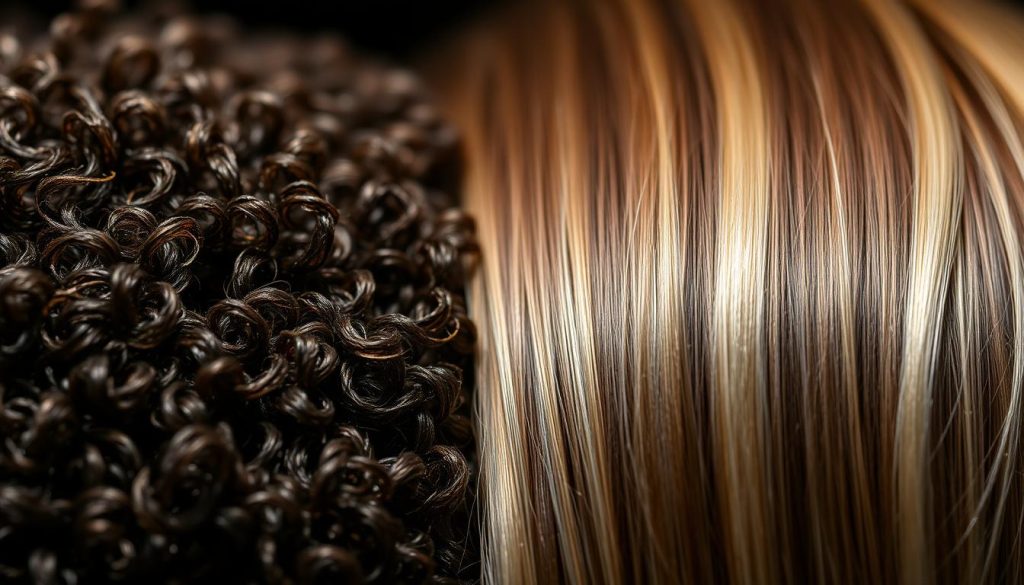
Survival Rates of Different Hair Types
The survival rates of different hair types when transplanted to the scalp vary. Beard hair shows a higher survival rate of approximately 95%, compared to 76% for chest hair. A comparison of survival rates is shown in the table below:
| Hair Type | Survival Rate |
|---|---|
| Beard Hair | 95% |
| Chest Hair | 76% |
The Body Hair Transplant Procedure

A body hair transplant procedure involves the extraction and transplantation of hair follicles from donor sites to recipient sites. This process is typically performed using the follicular unit extraction (FUE) technique, which allows for the transplantation of up to 5,000 hair grafts in a single session.
Pre-Procedure Preparation
Before undergoing a body hair transplant, patients must prepare themselves by adjusting their medications, making lifestyle modifications, and preparing the donor area. This ensures a smooth and successful procedure.
The Extraction Process
The extraction process involves the careful harvesting of body hair using specialized techniques. This requires great precision to ensure the quality of the extracted follicles and minimize damage to the donor site.
Graft Placement Techniques
Graft placement is a critical step in the body hair transplant procedure. The technique used can significantly impact the natural appearance of the transplanted hair. Skilled surgeons use various methods to ensure optimal results.
Follicular Unit Extraction (FUE) for Body Hair
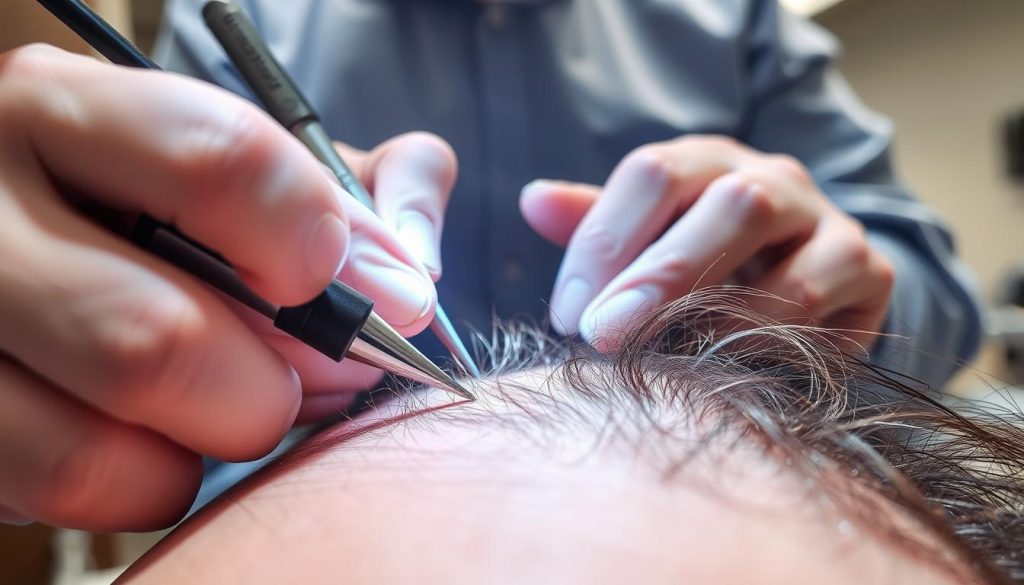
Follicular Unit Extraction (FUE) has emerged as a revolutionary technique in body hair transplantation. This method allows for the extraction of donor hair from various body parts, offering a viable solution for individuals experiencing hair loss.
Why FUE is Preferred for Body Hair
FUE is preferred for body hair transplantation due to its minimally invasive nature and the ability to extract hair follicles without leaving significant scarring. Unlike traditional strip harvesting methods, FUE involves the individual extraction of follicular units, resulting in less noticeable scars and a quicker recovery time. The precision of FUE also ensures that the extracted hair follicles are of high quality, leading to better aesthetic outcomes.
Specialized Tools and Techniques
The success of FUE for body hair transplantation relies heavily on the use of specialized tools and techniques. These instruments are designed to extract body hair follicles, which differ in depth and angle from scalp follicles. Experienced surgeons utilize these advanced tools to overcome the technical challenges associated with body hair FUE, ensuring a high survival rate of the transplanted hair and a natural-looking result.
Ideal Donor Sites for Body Hair Transplant
When considering a body hair transplant, identifying the ideal donor sites is crucial for a successful outcome. The quality and characteristics of the donor hair play a significant role in determining the effectiveness of the transplant.
Beard Hair as a Donor Source
Beard hair is considered an excellent donor source due to its thickness and growth characteristics, which are similar to scalp hair. The survival rate of beard hair grafts is approximately 95%, making it a highly reliable option for body hair transplantation.
Chest Hair Transplantation
Chest hair can also be used for transplantation, although it presents some challenges during extraction due to its unique characteristics. The yield from chest hair transplantation can range from 300 to 1000 grafts, depending on the density of chest hair.
Other Potential Donor Areas
Other areas of the body that can serve as donor sites include the back, abdomen, and under the chin. While these areas can provide viable hair for transplantation, their suitability varies based on hair quality and quantity. Surgeons carefully evaluate these factors to determine the optimal donor sites for each individual.
Candidates for Body Hair Transplantation
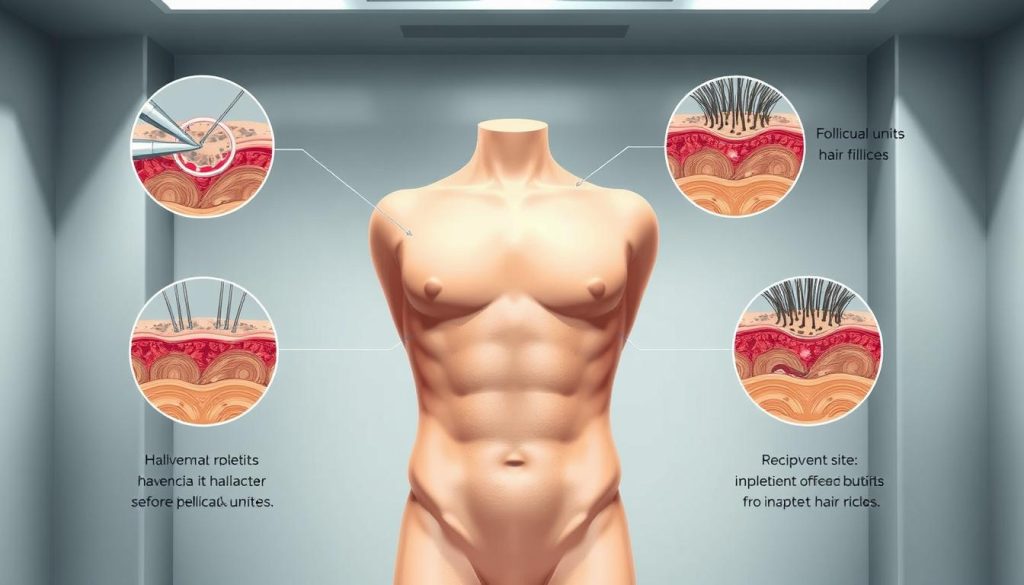
For those with limited scalp donor hair, body hair transplantation offers a promising alternative. This procedure is particularly beneficial for individuals who have undergone previous unsuccessful hair transplants or have extensive baldness.
Who Should Consider BHT?
Ideal candidates for body hair transplantation typically have limited donor area hair on the scalp, sufficient body hair for harvesting, and similarity between body hair and scalp hair. A thorough assessment of the donor area, body hair quality, and scalp recipient area is crucial in determining candidacy.
Contraindications and Limitations
While body hair transplantation can be an effective solution, there are certain contraindications and limitations to consider. Unsuitable hair types, medical conditions that may interfere with the procedure, and unrealistic expectations can impact the outcome. A comprehensive evaluation is necessary to determine whether a patient is a suitable candidate for body hair transplantation.
Benefits of Body Hair Transplant
One of the most significant benefits of body hair transplantation is its ability to provide a more extensive donor hair supply. This is particularly important for individuals experiencing extensive hair loss.
Increased Donor Hair Supply
Body hair transplantation significantly increases the available donor hair supply by utilizing previously untapped resources from various body areas, such as the beard, chest, and extremities. This expanded donor pool allows for more comprehensive hair restoration treatments.
Solutions for Severe Hair Loss
For individuals with severe hair loss, body hair transplant offers a viable solution that may not be possible with conventional hair transplantation methods. By leveraging body hair, patients can achieve more substantial and natural-looking results.
Scar Concealment Possibilities
Body hair transplantation also provides scar concealment possibilities, particularly for patients with visible linear scars from previous FUT procedures. The FUE technique used in body hair transplant minimizes scarring, resulting in a more natural appearance.
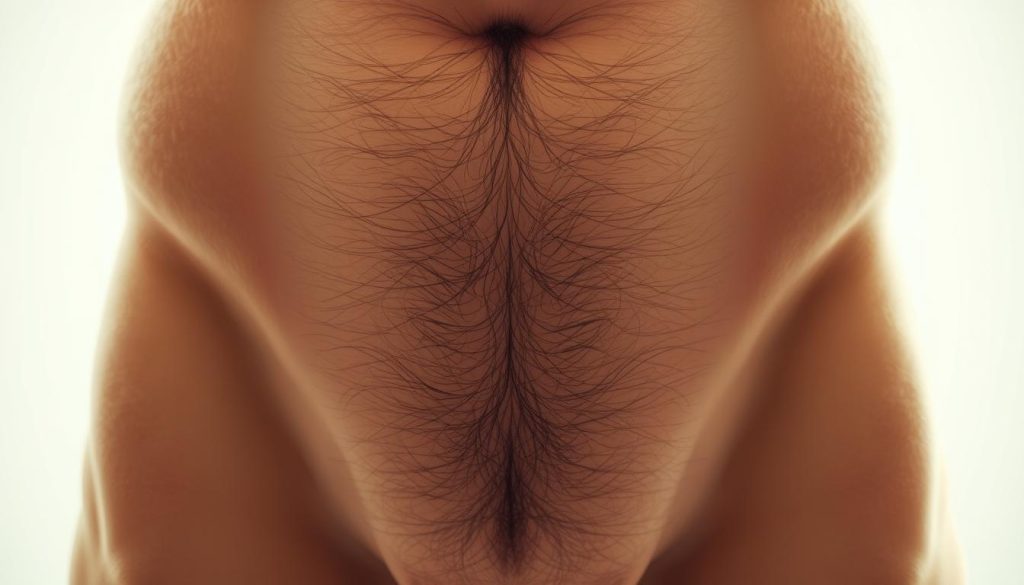
Recovery and Aftercare
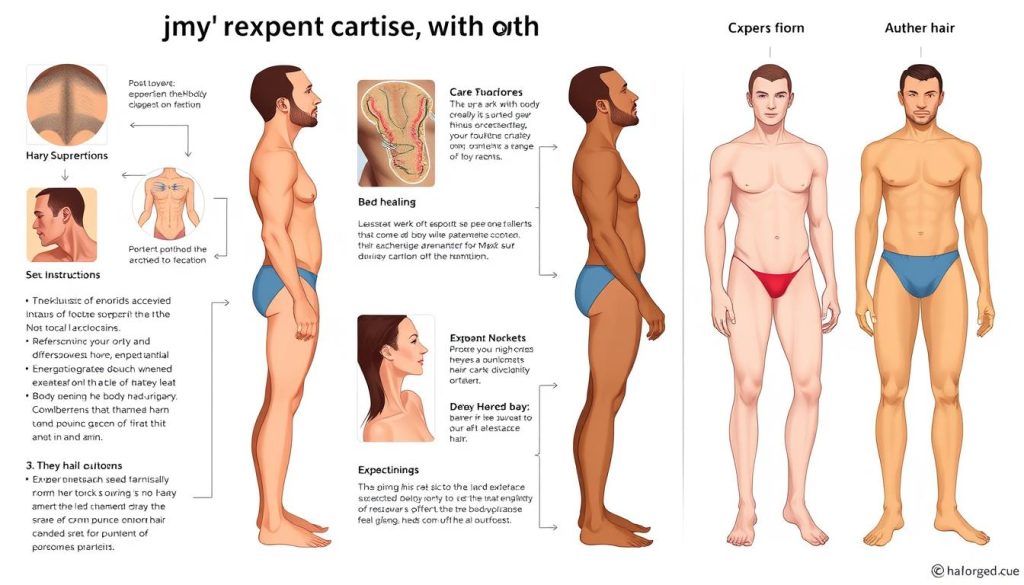
Recovery after a body hair transplant is a crucial phase that requires careful attention to ensure optimal results. The specifics of your recovery will depend on the location of the hair donor sites, the number of follicular units extracted, and the amount of hair transplanted to the scalp.
Immediate Post-Procedure Care
After the body hair transplant procedure, your recovery will begin with a recurring ointment application to the donor sites. You will receive instructions on how to promote healing and reduce scabbing. It is normal for the newly implanted hairs to fall out over the first few weeks as the growth process takes place over several months.
Long-term Maintenance
To maximize the results of your hair transplant, it’s essential to follow a long-term maintenance strategy. This includes using recommended hair care products and making necessary lifestyle adjustments. Regular follow-up treatments can also help ensure the longevity of your transplanted hair.
Expected Results from Body Hair Transplantation
Understanding the expected results from body hair transplantation is crucial for potential candidates. The procedure involves transplanting hair from the body to the scalp, resulting in a fuller head of hair. The results are natural and subtle, as the transplanted hair is carefully placed to follow the natural hairline.
Timeline for Visible Growth
The timeline for visible growth after body hair transplantation varies. Initially, there is a healing phase, followed by a shedding period. New growth typically emerges at 3-4 months, with final results visible at 12-15 months. Patients can expect to see significant improvements in hair density during this period.
Final Appearance and Texture
The final appearance and texture of the transplanted body hair on the scalp are influenced by several factors, including donor hair quality and surgeon expertise. Generally, the transplanted hair integrates well with existing hair, providing a natural look.
| Timeline | Expected Results |
|---|---|
| 0-3 months | Healing phase and shedding period |
| 3-4 months | Emergence of new growth |
| 12-15 months | Final results visible |
Cost Considerations for Body Hair Transplant
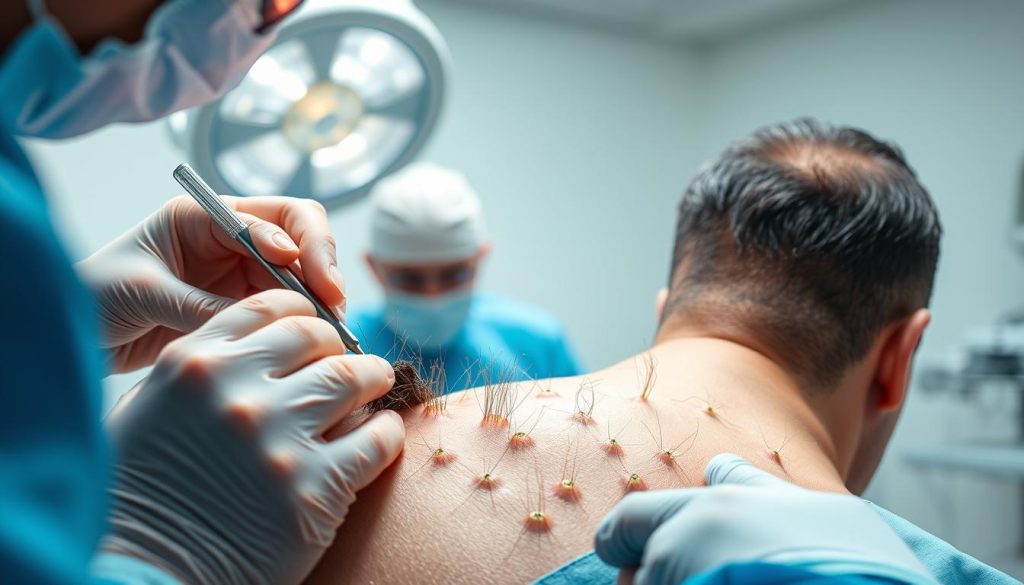
Body hair transplantation costs can vary significantly based on several key factors. Understanding these factors is crucial for individuals considering this procedure.
Factors Affecting Price
The cost of a body hair transplant is influenced by multiple elements, including the number of grafts required, the donor areas used, and the complexity of the procedure. The expertise of the surgeon and the geographic location of the clinic also play significant roles in determining the final cost.
Average Cost in the United States
In the United States, the average cost of body hair transplantation can range from $1,500 to $15,000, depending on the extent and complexity of the case. This wide range underscores the importance of consulting with a qualified surgeon to get an accurate estimate for your specific needs.
Making an Informed Decision About Body Hair Transplant
Making an informed decision about undergoing a body hair transplant involves several key factors. To start, it’s essential to research and select a qualified surgeon with specific experience in body hair transplantation, not just traditional hair transplants. This specialized experience can significantly impact the success of the procedure.
Potential candidates should also have realistic expectations about the results and understand both the benefits and limitations of body hair transplantation. It’s crucial to consider alternative options, including non-surgical approaches and traditional hair transplant techniques, before committing to the procedure.
Before proceeding, individuals should consider several pre-procedure factors, including timing, financial planning, recovery arrangements, and psychological readiness for both the procedure and the results. By carefully evaluating these aspects, individuals can make a well-informed decision about undergoing a body hair transplant.
Ultimately, a thorough understanding of the hair restoration process and its potential outcomes is vital for achieving satisfaction with the results of the body hair transplant procedure.
FAQ
What is the difference between scalp hair and body hair in terms of transplantation?
Scalp hair and body hair have different growth cycles and characteristics, affecting their suitability for transplantation. While scalp hair is typically used for hair restoration, body hair can be used when scalp donor hair is limited.
How is the extraction process performed for body hair transplantation?
The extraction process for body hair transplantation typically involves Follicular Unit Extraction (FUE), a minimally invasive technique that harvests individual follicular units from donor sites using specialized tools.
What are the ideal donor sites for body hair transplantation?
Common donor sites for body hair transplantation include the beard, chest, and other areas with dense hair growth. The choice of donor site depends on the individual’s hair loss pattern and available donor hair.
What are the benefits of using body hair for transplantation?
Using body hair for transplantation can increase the available donor hair supply, providing a solution for individuals with limited scalp donor hair. It can also help conceal scars and address severe hair loss.
How long does it take to see the final results of body hair transplantation?
The timeline for visible hair growth after body hair transplantation varies, but most patients can expect to see significant growth within several months. The final appearance and texture of the transplanted hairs may take up to a year or more to fully develop.
What are the factors that affect the cost of body hair transplantation?
The cost of body hair transplantation is influenced by factors such as the number of grafts required, the complexity of the procedure, and the expertise of the transplant team. The average cost in the United States can vary depending on these factors.
Is body hair transplantation suitable for everyone experiencing hair loss?
Body hair transplantation is not suitable for everyone. Certain medical conditions, such as autoimmune disorders, may be a contraindication for the procedure. A thorough evaluation by a qualified practitioner is necessary to determine candidacy.
